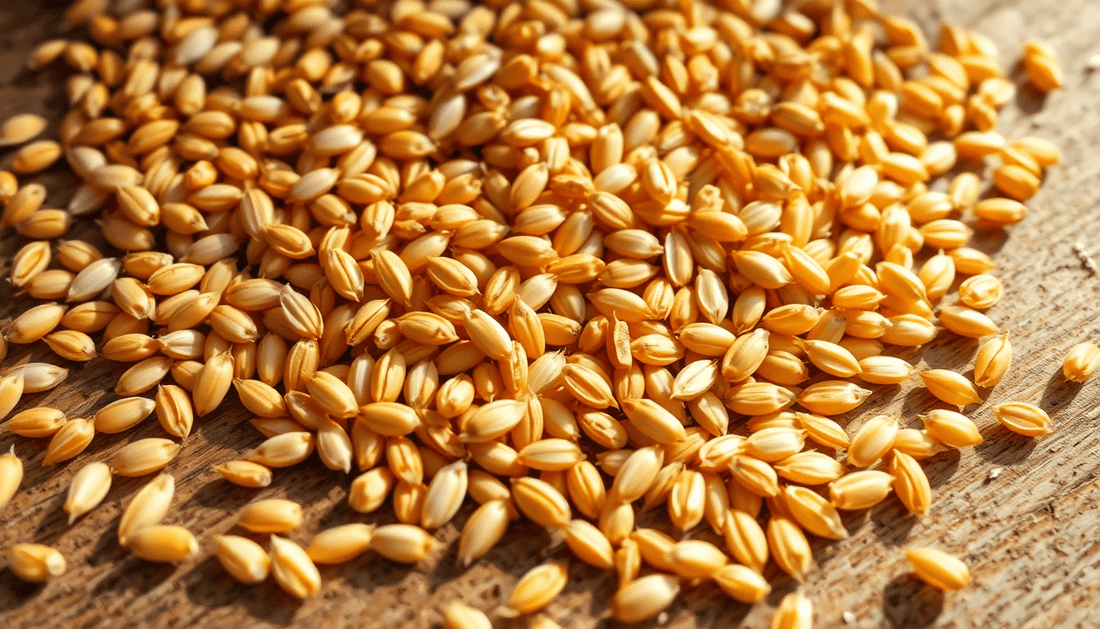
What Do Barley Seeds Look Like?
Barley, a humble grain with a rich history, has long been a staple in many cultures around the world. But have you ever stopped to truly examine the unique characteristics of barley seeds? In this informative blog post, we'll delve into the fascinating world of barley, exploring its physical features, varieties, and the numerous benefits it offers.
The Intriguing World of Barley Seeds
Barley is a cereal grain that has been cultivated for thousands of years, and it's easy to see why it has remained a beloved ingredient in kitchens and pantries worldwide. These small, oblong-shaped seeds come in a range of colors, from the familiar golden hue to more unusual shades of blue, purple, and even black.
One of the most distinctive features of barley seeds is the presence of a hull, a tough, protective layer that surrounds the grain. This hull can be either intact (known as "hulled" barley) or removed (referred to as "hull-less" or "pearled" barley). The presence or absence of the hull can significantly impact the appearance, texture, and culinary uses of the grain.
Exploring the Varieties of Barley
Barley comes in a variety of forms, each with its own unique characteristics. The most common types include:
Hulled Barley
Hulled barley, also known as "whole" or "pearl" barley, retains its outer hull, giving it a slightly chewy texture and a nutty flavor. This variety is often used in soups, stews, and as a side dish.
Hull-less Barley
Also called "naked" barley, this type has had the hull removed, revealing the smooth, polished grain underneath. Hull-less barley is often used in baking, as a breakfast cereal, or as a substitute for rice.
Malted Barley
Malted barley is a specialized form of the grain that has been allowed to germinate, then dried and roasted. This process transforms the starches into sugars, making malted barley a key ingredient in the production of beer and whisky.
Identifying Barley Seeds
Recognizing barley seeds can be a useful skill, especially when shopping for whole grains or preparing recipes that call for this versatile ingredient. Look for the distinctive oblong shape, the presence or absence of the hull, and the range of colors that barley seeds can display.
The Nutritional Powerhouse of Barley
Barley is not only visually appealing but also a nutritional powerhouse. This grain is rich in fiber, protein, and a variety of essential vitamins and minerals, including B vitamins, iron, and magnesium. Consuming barley has been linked to numerous health benefits, such as improved digestion, reduced cholesterol levels, and even a lower risk of certain chronic diseases.
Culinary Delights with Barley
Barley's versatility extends far beyond its visual appeal. This grain can be used in a wide range of culinary applications, from hearty soups and stews to nutty-flavored pilafs and even as a substitute for rice in risotto-style dishes. Barley's chewy texture and mild flavor make it a perfect complement to a variety of ingredients, making it a valuable addition to any home cook's repertoire.
Exploring the Wonders of Barley
Whether you're a seasoned cook or a curious food enthusiast, understanding the unique characteristics of barley seeds can open up a world of culinary possibilities. From its distinctive appearance to its impressive nutritional profile and diverse culinary applications, barley is a grain worth exploring and incorporating into your daily diet. So, the next time you encounter these small, unassuming seeds, take a moment to appreciate the hidden wonders they hold.

